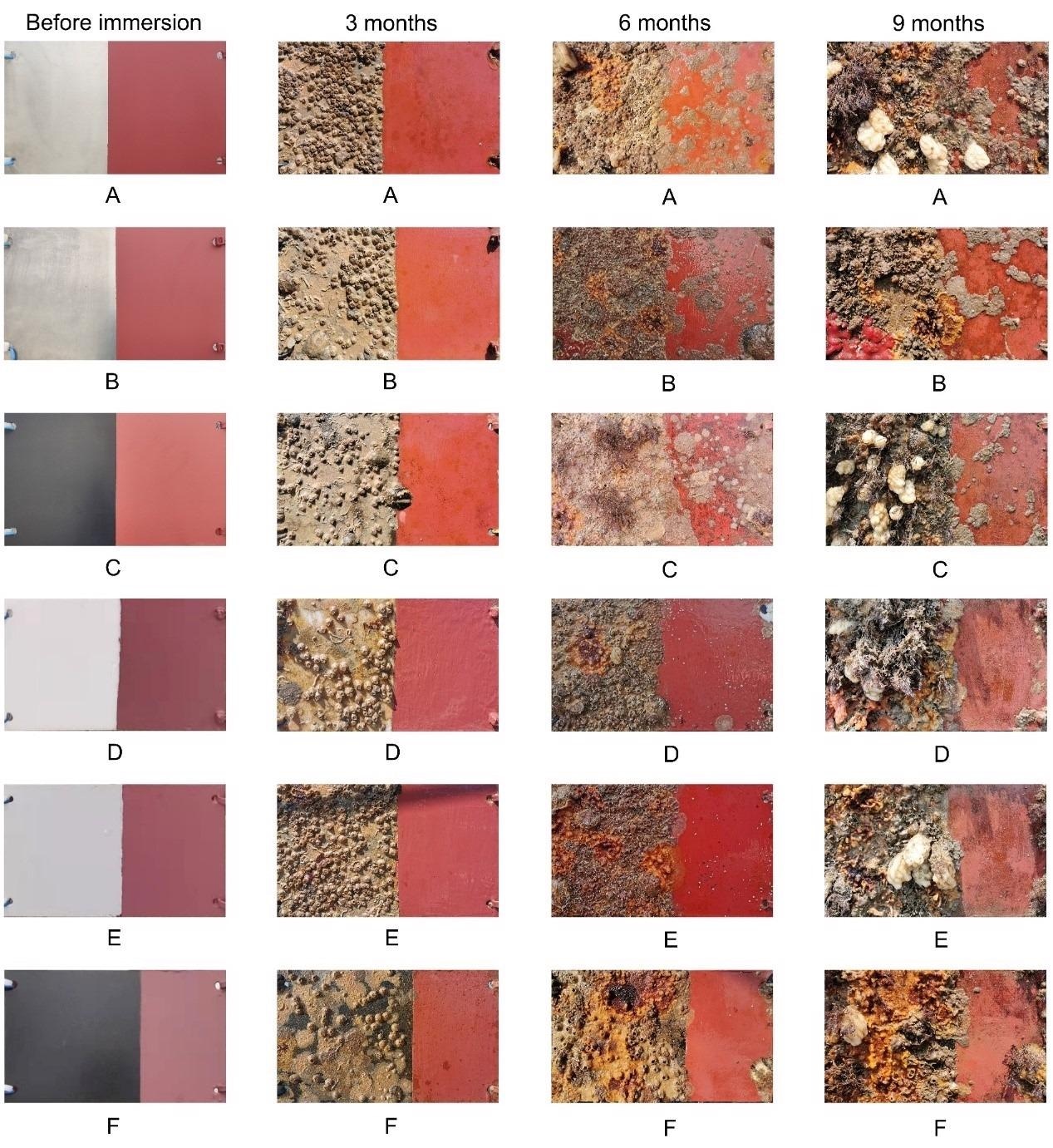Biofouling is a major challenge for underwater sensors, particularly in marine environments where long-term in situ monitoring takes place. Biofouling on in situ sensor surfaces can reduce sensor lifetime, increase maintenance costs and frequency and cause signal drift and data errors.
 Test panels before and after immersion in seawater at different time points. Image Credit: Shenzhen Institute of Advanced Technology.
Test panels before and after immersion in seawater at different time points. Image Credit: Shenzhen Institute of Advanced Technology.
Natural products with antifouling properties are potential sources of environmentally friendly antifoulants. However, most studies rely on lab tests to analyze the antifouling efficiency of natural products.
Camptothecin (CPT) was recently discovered to have effective antifouling activity and lower toxicity in seawater by researchers from the Chinese Academy of Sciences’ Shenzhen Institute of Advanced Technology (SIAT) and Xiamen University.
The research was published on March 18th, 2022, in the International Biodeterioration & Biodegradation journal.
Over nine months of seawater immersion, the study found substantially lower macrofouling coverage on areas painted with the CPT-based paint compared to unpainted areas in six materials.
The tested panels were made from six different materials, including three plastics (polyvinyl chloride, polyoxymethylene, and Teflon) and three metals (TC4 titanium alloy, 316 L stainless steel, and 7075 aluminum alloy). These materials are commonly used for constructing underwater sensor housings.
Since July 7th, 2019, the scientists hung these panels underneath a floating raft in Xiamen Bay, China, at a depth of 1 m in seawater.
The CPT-based paint showed good antifouling performance after nine months of submersion, minimizing biofouling by 73.33%–96.41% when compared to unpainted control areas (100% coverage). The antifouling properties of plastic material were superior to those of metal.
Our results suggest that the CPT-based paint could be used as a potential solution to control the biofouling of sensor housings for long-term in situ applications in marine environments.
Danqing Feng, Study Co-Corresponding Author and Professor, Xiamen University
Since June 22nd, 2020, the researchers also placed three underwater sensors beneath a moored surface buoy platform in Daya Bay, Shenzhen, China. The sensors remained clean after four months of deployment under a surface buoy in the marine environment.
It is worth noting that the CPT-based paint also has great potential for other artificial submerged structures in marine environment, such as ship hulls, oil platforms, and aquaculture facilities.
Jianping Li, Study Co-Corresponding Author and Professor, Shenzhen Institute of Advanced Technology, Chinese Academy of Sciences
Journal Reference:
Hao, H.-H., et al. (2022) Sea-trial research on natural product-based antifouling paint applied to different underwater sensor housing materials. International Biodeterioration & Biodegradation. doi.org/10.1016/j.ibiod.2022.105400.